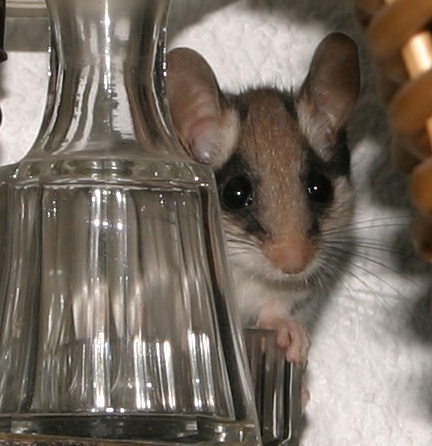Garden Dormouse (Eliomys quercinus) - Wiki Garden dormouse
From Wikipedia, the free encyclopedia
[Photo] A garden dormouse close up. Beschreibung: Ein Gartenschl??fer. Quelle: Fotografiert am 03.09.2004 mit Canon EOS 300D. Fotograf / Zeichner: Sebastian Stabinger
The garden dormouse (Eliomys quercinus) is a rodent in the dormouse family.
Features
Dormice are typically 10 to 15 centimeters (4 to 6 inches) in length, with the tail adding an additional 8 to 14.5 cm (3 to 53???4 inches). It weighs 60 to 140 grams (2 to 5 ounces). The coat is gray or brown, with a white underside. The garden dormouse can be recognized by black eye markings, relatively large ears, short hair, and a white tassel at the end of the tail.
Range and habitat
In spite of its name, the garden dormouse's main habitat is the forest, though it can also be found in fruit-growing regions. It is particularly common in southern Europe, but its range extends into the north. Garden dormice are often found in the Alps, in the Bavarian Forest, and in the Ore Mountains. The species is also present in northern Germany, but the population there is apparently not capable of large-scale reproduction.
Way of life
Garden dormice are primarily nocturnal, sleeping in spherical nests in trees during the day. At night they look for food, mainly eating larger insects like grasshoppers and beetles, snails, eggs, young nestlings, small mice, and spiders, as well as berries, fruit, and nuts like acorns and beechnuts. While omnivorous, the diet of dormice contains slightly more animal protein than vegetation.
The mating period lasts from April to June. During this time, the female indicates her readiness to mate by squeaking loudly. The young are usually born in litters of three to seven, after a gestation period of 23 days. Blind and naked at birth, they open their eyes after about eighteen days, and are nursed until they are one month old. They become independent at two months of age, but do not reach sexual maturity until the next year. They have a life expectancy of about five years.
It is not unusual for a garden dormouse to eat one of its unfortunate rivals during the mating season. Cannibalism is also observed occasionally when the animal is coming out of hibernation.
Classification
On the islands of the Mediterranean Sea there are several subspecies of garden dormouse, all of which are very rare. These are the Sardinian garden dormouse (E. q. sardus), the Sicilian garden dormouse (E. q. dichrurus) and the Liparian garden dormouse (E. q. liparensis). The populations of western Asia and north Africa, on the other hand, have recently been separated into their own species Eliomys melanurus.
http://en.wikipedia.org/wiki/Garden_dormouse
| The text in this page is based on the copyrighted Wikipedia article shown in above URL. It is used under the GNU Free Documentation License. You may redistribute it, verbatim or modified, providing that you comply with the terms of the GFDL. |
